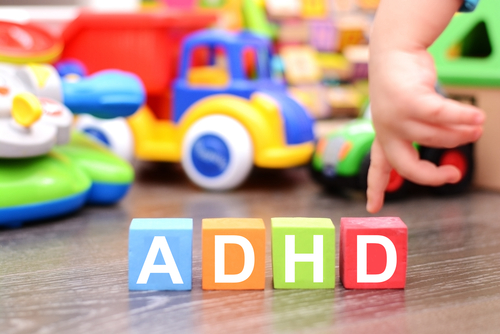
Attention-deficit hyperactivity disorder (ADHD), previously referred to as attention deficit disorder (ADD), is listed in the Diagnostic and Statistical Manual of Mental Disorders, Fifth Edition (DSM-5) as a chronic, neurobiological disorder. ADHD is characterized by “a persistent pattern of inattention and/ or hyperactivity-impulsivity that interferes with functioning or development.” Although ADHD is one of the most studied conditions in America, the precise cause for developing ADHD remains unknown. Research has, however, indicated that genetic factors, environmental factors, and developmental delays may all contribute to its potential development. ADHD is extremely common, and the worldwide prevalence of ADHD is estimated to be around 2.2% in children and 2.8% in adults. The Mayo Clinic provides the following examples of some of the common symptoms that an individual with ADHD could exhibit:
- Inattention to detail.
- Unable to engage in activities that require prolonged attention.
- Failure to meet deadlines.
- Mind constantly wandering/ does not listen when directly spoken to.
- Organizational difficulties.
- Misplaces belongings frequently.
- Easily distractible.
- Excessive talking.
- Regularly and mindlessly fidgeting.
- Restlessness.
- Little or no patience.
Symptoms will often range in severity and can differ depending on a variety of contributing factors. ADHD and anxiety share a complicated relationship, as many individuals with ADHD also experience symptoms of anxiety, and vice versa.
Anxiety is the body’s natural response to stress. As is defined in the Oxford English Dictionary, anxiety is “a feeling of worry, nervousness, or unease, typically about an imminent event or something with an uncertain outcome.” While fleeting anxiety is unavoidable, it is atypical to experience persistent and debilitating symptoms of anxiety. An individual may be struggling with an anxiety disorder when pervasive anxiety interferes with his or her ability to function in daily life. According to Johns Hopkins Medicine anxiety disorders affect up to 18% of the population. The National Alliance on Mental Illness (NAMI) asserts: “Anxiety disorders are a group of related conditions, each having unique symptoms. However, all anxiety disorders have one thing in common: persistent, excessive fear or worry in situations that are not threatening.” There are a variety of signs and symptoms associated with anxiety disorders. Akin to symptoms of ADHD, the symptoms associated with an anxiety disorder can present in any combination with varying levels of severity. In America, nearly two-thirds of those living with ADHD have at least one coexisting condition, and approximately 25% of them have a diagnosable anxiety disorder.
Treatment In Calabasas
Calabasas is a city in California. It is a well-known suburb of Los Angeles, located west of the San Fernando Valley and north of the Santa Monica Mountains. Over the past decade, the city of Calabasas has grown in its reputation for luxury as well as for privacy which makes it a hidden gem for residential living for society’s elite, and one of the most desirable destinations in Los Angeles County. It is also home to a plethora of highly qualified mental health clinicians providing an array of therapeutic services and treatment options.
The information above is provided for the use of informational purposes only. The above content is not to be substituted for professional advice, diagnosis, or treatment, as in no way is it intended as an attempt to practice medicine, give specific medical advice, including, without limitation, advice concerning the topic of mental health. As such, please do not use any material provided above to disregard professional advice or delay seeking treatment.


